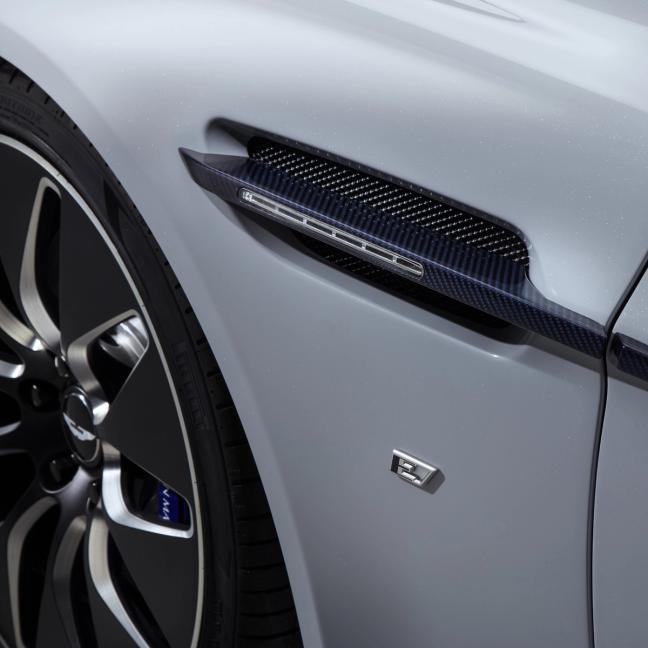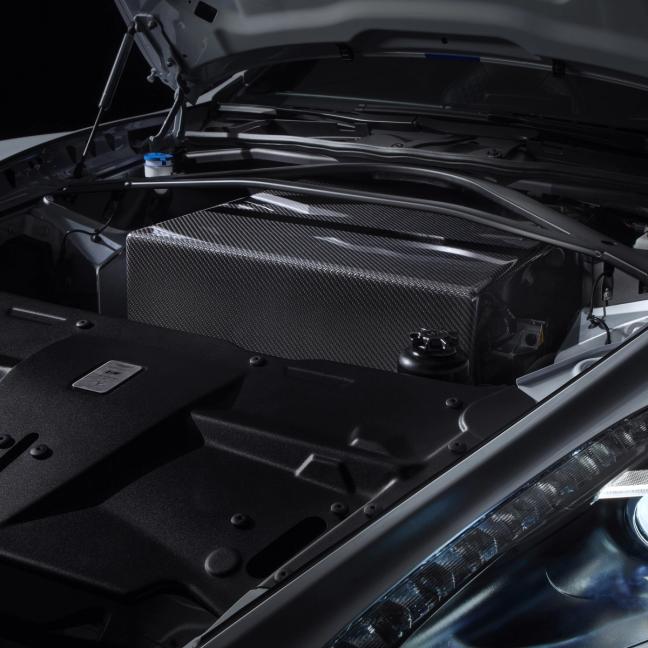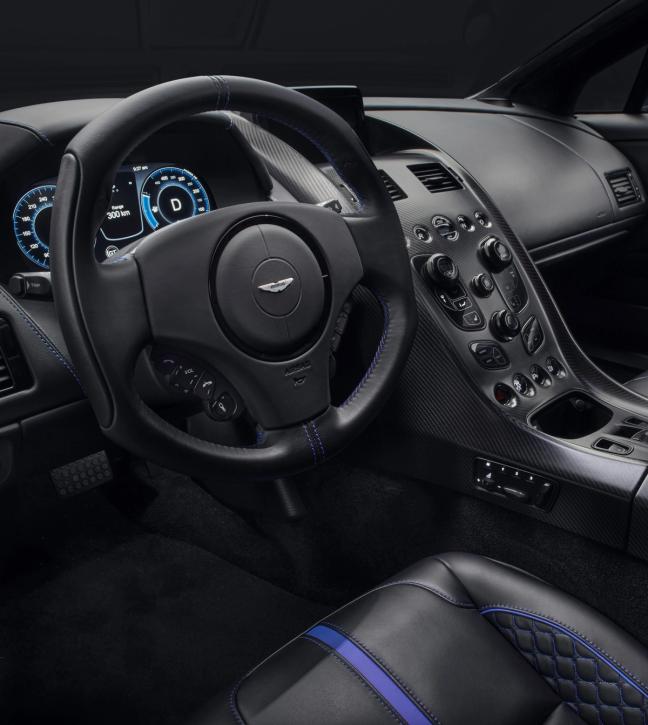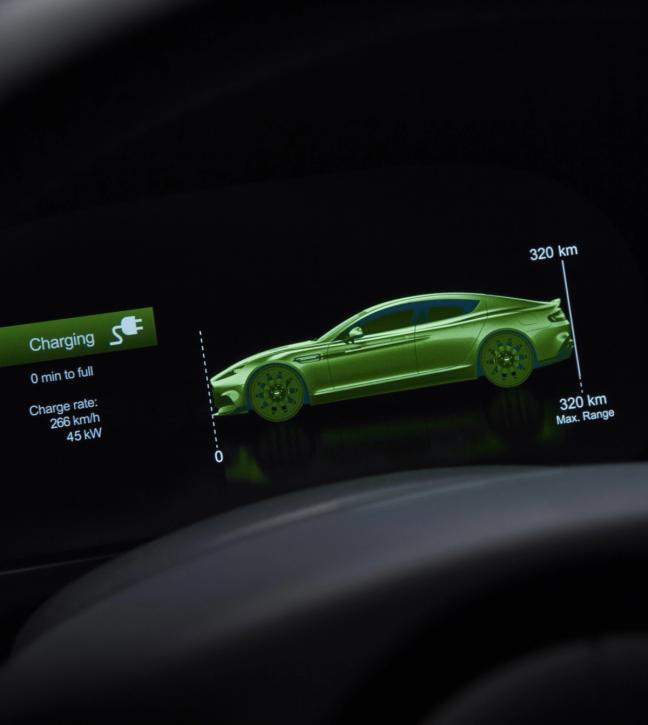Aston Martin just won’t stay in their lane. From when the brand first fired up, setting up shop in an old stables, to overcoming several bankruptcies and buyouts in the years that followed, the carmaker has driven a different track to almost any other automotive brand in modern history.
Even fairly recently, in 2010, the company found a mischievous way to leap through a loophole in European emission standards — by rebranding a handful of Toyota iQs as ‘Aston Martin Cygnets’ in order to lower average emissions across their fleet.
But perhaps the furthest Aston have steered off the stereotypical supercar track is in their approach to electric motoring — and the Rapide E project; the world’s first all-electric luxury supercar.

What’s so notable about the Rapide E, we hear you cry over the roar of Aston’s signature, still staunchly petrol-powered V12? Our answer: the timing. Where other car manufacturers started dabbling and announcing their development of electric vehicles many years ago, Aston Martin seem to have been uncharacteristically slow off the mark.
Tesla launched their first electric sports car, the original Roadster, back in 2008. Ferrari unveiled a hybrid version of their flagship 599 in 2010, followed by Porsche’s prototype electric Boxster E in 2011. Even Lamborghini rolled out a hybrid, the Asterion, at the 2014 Paris Motor Show. But Aston Martin? They waited, waited and waited some more — only revealing the first look at the Rapide E last month.



So why has the British brand’s first foray into the world of electric cars taken so long? We asked John Caress, Vehicle Line Director on the Rapide E, to lift the bonnet on Aston Martin’s electric game plan, and explain what the future has in store for the supercar manufacturer.
“We originally created and showcased the proof of concept for the Rapide E in 2015,” clarifies Caress. “And, over this time period, we’ve worked in co-operation with Williams Advanced Engineering to create the production specification Rapide E model recently launched at the Shanghai Auto Show.”
"The time has been taken to make sure that Aston Martin creates a product that has the necessary performance credentials required by its customer base..."
For those of you wired into the technical side of things, the £250,000 Rapide E rolled (silently) out at the Shanghai Auto Show sports a 65kWh battery, around 320km of driving range and a limited top speed of 250km/hr.
But that still doesn’t explain; why the wait? As Caress reveals, even though consumers may have perceived a delay, Aston Martin were actually working tirelessly behind the scenes; focusing on the creation of a viable wider business model rather than just one token concept.


“The time has been taken to make sure that Aston Martin creates a product that has the necessary performance credentials required by its customer base,” says Caress, before adding; “while also gathering knowledge and information that can underpin the development of its future all-electric luxury brand Lagonda, launching in just a couple of years.”
Here, then, is the real reason Aston’s electric car has taken so long to charge out of the shadows. Whereas other manufacturers have showcased concepts at auto shows — cars never destined for the actual production line — Aston Martin have been quietly taking their time to slowly, surely ensure that Lagonda will be a success.
And, although the brand has been guilty of bandwagon-jumping in some other areas — the DBX is a late addition to an already-saturated luxury SUV market — Lagonda looks to be a whole new approach to the electric car industry. And the Rapide E, says Caress, is the result of millions in research and development to spearhead the launch of this all-new, all-electric branch of the brand.

“The car utilises the original Rapide aluminium body as its basis, and we worked closely with Williams Advanced Engineering to engineer and develop the powertrain,” explains Caress. “It will be the first electric offering in the luxury segment, and provides one of the first ever 800V architecture electric systems fitted to a sports car — while still delivering exceptional dynamics.”
They’re impressive achievements, and ones arguably only accomplished given the time Aston Martin took to research the project — rather than cobbling together concepts. The Vehicle Line Director also adds that the other reason the Rapide E took so long to complete came as a result of the designers and engineers’ desire to not lose that intangible Aston Martin magic.
"It will be the first electric offering in the luxury segment..."
“To ensure that the Rapide E doesn’t lose any of the driving experience of the internal combustion engine variant,” says Caress, “a full dynamics programme is underway to ensure that the car is tuned and calibrated to deliver the same exceptional ride quality and handling of the Rapide AMR, that the car is based upon.”
As Caress makes clear, it was never Aston Martin’s intention to simply create a vehicle that can accelerate quickly in a straight line, or to stuff an electric powertrain into an existing car. They wanted a supercar that would perform exceptionally in all areas. As such, even the exterior was redesigned, with a new look introduced that optimises aerodynamic performance by 8 per cent.

But the Rapide E isn’t the only Aston to get the electric treatment. The brand’s bold hybrid bypercar, the Valkyrie, is also humming along quietly behind-the-scenes. At $3.2 million, the Valkyrie represents Aston Martin’s other approach to reducing emissions. But, with government currently fighting to bring their ban on petrol and diesel vehicles forward to 2032, is this lean, hybrid machine destined to hit the brakes before it even reaches top speed?
“Valkyrie and Rapide E live in very different spheres,” explains Caress, “with two different methods of power delivery completely. If you were to look at how these two products are shaping Aston Martin’s future, you should consider Rapide E as the pre-cursor to Lagonda and Valkyrie to all hybrid Aston Martins.”
So, while the hypercar shows a more transitional phase in the company’s evolution, it would appear that the Rapide E — late to the party, but rapidly becoming the life and soul — is the true template for Aston Martin’s future, and the poster boy for what will become “the world’s first all-electric luxury brand.”
Want more British sports cars? Follow BAC as they deliver their 100th MONO to Denmark…

Become a Gentleman’s Journal Member?
Like the Gentleman’s Journal? Why not join the Clubhouse, a special kind of private club where members receive offers and experiences from hand-picked, premium brands. You will also receive invites to exclusive events, the quarterly print magazine delivered directly to your door and your own membership card.


